Stephen Bierce
Reviews By Author
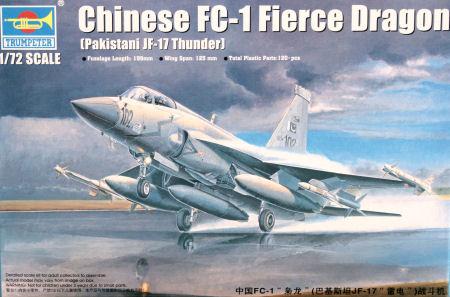
|
Chinese FC-1 Fierce Dragon/Pakistani JF-17 ThunderPublished:
The history of the Mikoyan-Gurevich MiG-21 in the hands of the People's Republic of China (J-7 in the PLAAF; F-7 for export) is a long and convoluted one, which came to a close with the deliveries of the final production examples to export customer nations in 2013. Almost from the beginning, the Chinese wanted to either improve the design into something more modern, or outright replace it with something original. In the JF-17, which started as a 1980s upgrade concept known as the Super Seven, they achieved their goal both ways at the same time—albeit too late to help the PLAAF, who have chosen the J-10 as the official successor for their J-7s. In a classic case of politics breeding strange bedfellows, the Chinese and the Pakistanis both found themselves at the wrong ends of… more |
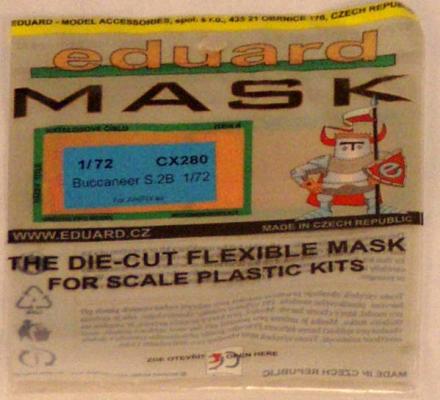
|
Buccaneer S.2B Mask SetPublished:
I've had an Airfix Buccaneer in my to-build pile for about ten years since I bought it in a flea market in Florida. I'd never used die-cut masking sets (or liquid mask) before, so I took up this product as something of a challenge. The product is relatively easy to use...more so on the canopy and windshield than on the landing gear. Still, you need liquid masking agent to complete the job on the canopy, and I'm not sure I did the job right. After painting and removal of the masks, the canopy had either residue or etching left behind on some of the liquid masked areas. I'd kept the masking on for more than a week, so that might have something to do with it. I didn't get a chance to photograph the completed windshield. The mask removed some of the paint from one of the… more |
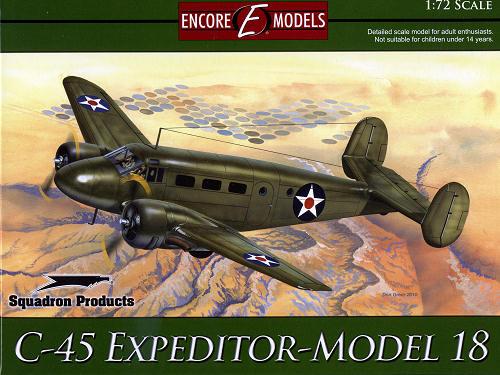
|
C-45 Expeditor Model 18Published:
Beechcraft has built many multi-engined airplanes over its long and successful history, but when anybody in aviation mentions a "Twin Beech", they don't mean a Baron, a Duke, or even a Super King Air – they mean a Model 18. Designed at the end of the 1930s as a competitor to Lockheed's Electra 10, it soon eclipsed that type in production with demand for light transports and aircrew trainers during WW2 (with Lockheed busy with building P-38 Lightning fighters, Hudson bombers, and bigger transport planes, Beech was in the perfect position for the business!). Thousands built, they served second-line military roles all over the world with all the Allied nations, and Beech kept the type in production afterwards for the growth of postwar air travel. Many are still in flying condition today… more |
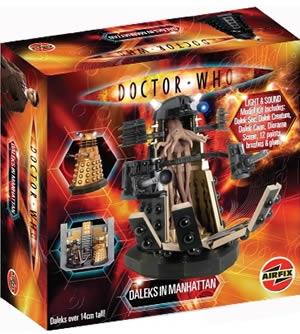
|
Daleks in Manhattan - a Doctor Who Gift SetPublished:
When this model set became available in the Reviewer Corps back in March 2009, I got all excited, and I thought I had reason to be. This seemed to be a project made for me, as a long time ago I was a Doctor Who fan and knew the Daleks probably better than your average IPMS/USA dude. But now, I look back at this project and wish I had never taken it. Frankly, I was going to get cute and throw in all sorts of in-jokes and trivia in this review, sort of like I did with the Lamborghini Jota review I did a few years back. This kit does NOT deserve it. Nor does it deserve a "slam job". I'm not sure what this kit deserves. It is mediocre. It's too toylike to be a serious model, but too involved and difficult for young modelers. It's too esoteric for the general scale model… more |
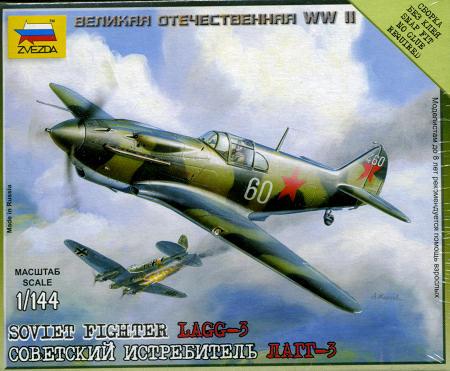
|
Soviet Fighter LAGG-3Published:
The Lavochkin-Gorbunov-Gudkov LAGG-3 was an important fighter aircraft for the Soviet Air Force at the time of the German "Barbarossa" invasion in 1941, and a technological parallel to the British Hawker Hurricane, French Dewoitine D.520, and the American Curtiss P-40 Tomahawk of the time. With a mostly wooden construction and a relatively powerful engine and adequate firepower, it held the line while giving the Russians time to develop more advanced combat machines to fight the Luftwaffe. This model kit is part of Zvezda's "Art of Tactic" wargame model series, which also includes ground vehicles and figures as game pieces. In that role, this kit is engineered more for ease of assembly and sturdiness than surface detail, although it does quite well in that regard for the size… more |
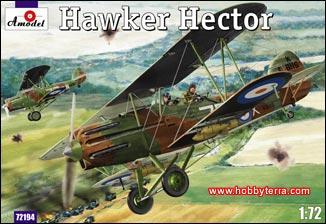
|
Hawker HectorPublished:
The fit on this model had me working very hard from every direction. For example, on the tailplane, there was a locator tab that didn’t seem to have a matching hole. The result was that I accidentally mounted the horizontal stabilizer inverted. I had to carefully prize it off and clean the parts before remounting it and adding the vertical stabilizer and tail struts. I applied most of the paint scheme before final assembly. A second-line R.A.F. type, (post-1941) called for a medium gray/olive green upper surfaces (Testors 1163 Flat Gray for the gray and my suicide stew bottle of mostly Pactra olive greens for the green) and “Sky” undersides (a mix of Testors 1162 Flat Blue and Model Master FS36375 Light Ghost Gray). The pattern I decided to use was Eddy Wass’ “… more |
HISPANO Spitfire Mk.V 20mm CannonsPublished:
I'll admit to being a little confused when I requested this assignment. I was expecting something else. Still, these are very welcome components as I have two 1/72nd scale Spitfire Mk.V’s in my “to-build” pile. The Spitfire was among the earliest production fighter aircraft to adopt a 20mm cannon as armament; with the “B” arrangement for the cannon being introduced in the Mk.I and Mk.II models that fought the Battle of Britain. While the success of the armament was spotty at that time, it became the standard on the Mk.Vb [the same guns also found their way into the initial production Sea Fury]. The earliest Mk.Vc Spitfires also used this pattern of gun barrels before going to the “beefier” barrels as standard (parts that Master also offers separately). So these parts are not… more |
|
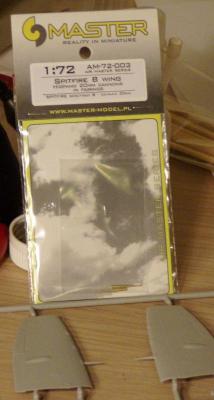
|
Hispano 20mm Cannons in FairingsPublished:
I admit to being a little confused when I requested this assignment; I was expecting something else. Still, these are very welcome components as I have two 1/72 scale Spitfire Mark Vs in my “to-build” pile. The Spitfire was among the earliest production fighter aircraft to adopt 20mm cannon as armament, and the “B” arrangement for the cannon was introduced in the Mark I and Mark II models that fought the Battle of Britain. While the success of the armament was spotty at that time, it became standard on the Mark VB...and the same guns were also used on the initial production Seafire. The earliest Mark VC Spitfires also used this pattern of gun barrels before going to the “beefier” barrels as standard (parts that Master also offers separately). So these parts are compatible with… more |
